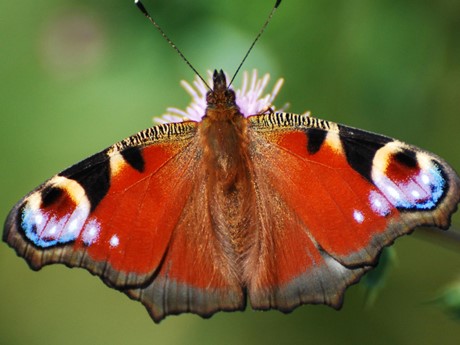Volunteer Spotlight: Julie
Alex Marshall, 04/11/2025
Nature’s Calendar is a citizen science project. That means the data is collected from people of all ages, backgrounds and abilities, and not necessarily by people who are scientists by profession (although, scientists can of course take part, too!). Anyone can volunteer to become a citizen scientist, and every single Nature’s Calendar volunteer adds vital information to the database.
The dedication of some volunteers has been especially important, as these people have been recording the changing seasons with Nature’s Calendar for 20 years or more, some have even been recording since the very beginning in the year 2000!
Introducing Julie
One of those dedicated volunteers is Julie from York, she has been recording for 23 years and has kindly offered to answer a few questions about her experience as a Nature’s Calendar recorder.
Since 2003, Julie has submitted around 450 records with Nature’s Calendar spanning all 8 of the optional species groups. 170 of those records have been for bird species and around 120 have been tree and shrub records, with insects being the next popular type of species that Julie has recorded over the years.
Long-term records like Julie’s are so important in studying the effects of climate change on our local wildlife. Short-term records are useful in studying the effects of weather fluctuations, but we need to be able to see long-term changes over several years in order to study the effects of a changing climate.

Swallows are Julie’s most recorded bird species. Photo credit: Clare Richardson WTML

The brimstone and peacock are Julie’s most recorded butterfly species. Photo credit: John Bridges WTML

Garlic mustard is Julie’s most recorded flower species. Photo credit: Margaret Barton WTML
The interview
When did you start recording for Nature’s Calendar?
Apparently I started in 2003! although I must confess that I don't remember the exact date.
Why do you record for Nature’s Calendar?
I think I signed up in response to something I saw in the Woodland Trust magazine. In those days it was called "The phenology network" and was run in collaboration with the Centre for Ecology and Hydrology. My parents were keen amateur naturalists - my mum taught us the names of the flowers and plants we saw when out and about, and my dad is an avid birdwatcher, so noticing what was happening in nature around me was something I'd always done. I don't drive and get wherever I need to go by public transport, bike or on foot, which allows me to see the seasonal changes on my daily commutes. It seemed a "no brainer" to put these observations to good use by contributing to a citizen science project.
Have you noticed any changes in spring and autumn over the time that you’ve been recording?
The drastic decline in numbers of hirundines (swallows, house martins, swifts) makes me feel very sad. I wonder whether there will be any for me to record next year, as our local regulars are nearly all gone. It gets harder and harder to record the arrival of spring in the trees as everything has got so fast now that if I take a different route or miss a day, I miss a whole tranche of recordable events.
Do you have a favourite species or special tree, for example, that you have been recording? Why is it a favourite/special species to you?
I think my favourite species are the spring migrants returning. Hearing the first chiff-chaff (it usually arrives here before all the others), taking a moment to register that it really was a chiff-chaff I just heard, and that spring is on the way, lifts the heart. We share the excitement around the family by text message, competing to be first, bemoaning the fact that they haven't reached us yet, or calculating that if they've got to my sister's already then we should hear one in a week or so as they move North...

Julie's migratory bird records
Do you have any other Nature’s Calendar recording stories that you would like to share?
Keeping track of first and third sightings/hearings in the spring was quite a challenge! I'm glad that's simpler now. I've never been a very good recorder of autumn events, but I do try and keep track of the migrant birds, and whilst I am sad to say goodbye to the last few lingering swallows, I love to hear the first chattering of the arriving fieldfares.
What would you say to other people that are considering becoming a recorder for Nature’s Calendar?
Just do it! It's a great way to connect with your surroundings and begin to really notice what's happening. It provides excellent motivation to get out there and find seasonal treasures to record, and it's fun to watch observations build up over time both locally and nationally.

Julie's first flowering garlic mustard records

Julie's first cut lawn records

Julie's first recorded brimstone records
Thank you, Julie, and thank you to all of our wonderful Nature’s Calendar volunteers!
Whether you have sent in 1 record or 1000 records – your contribution is so important, THANK YOU.
If you have been inspired by Julie to get involved with Nature’s Calendar, why not begin by registering for an account and reading more about how to get started, or read our volunteer newsletters.
